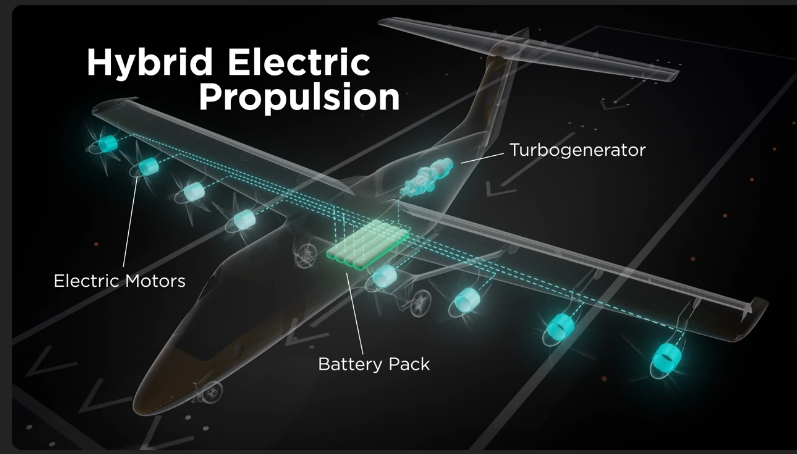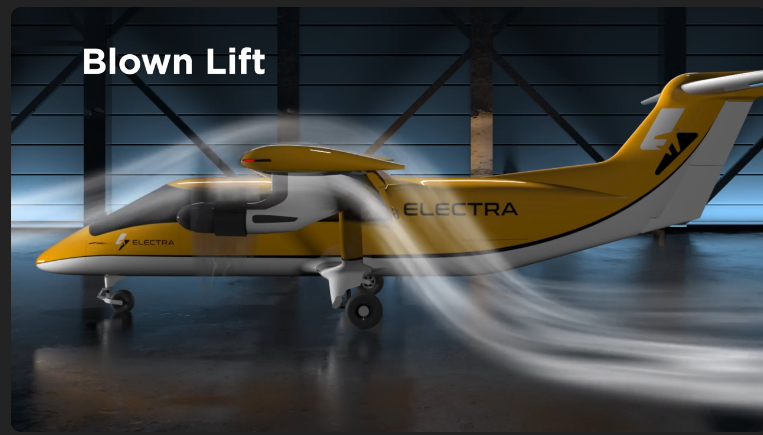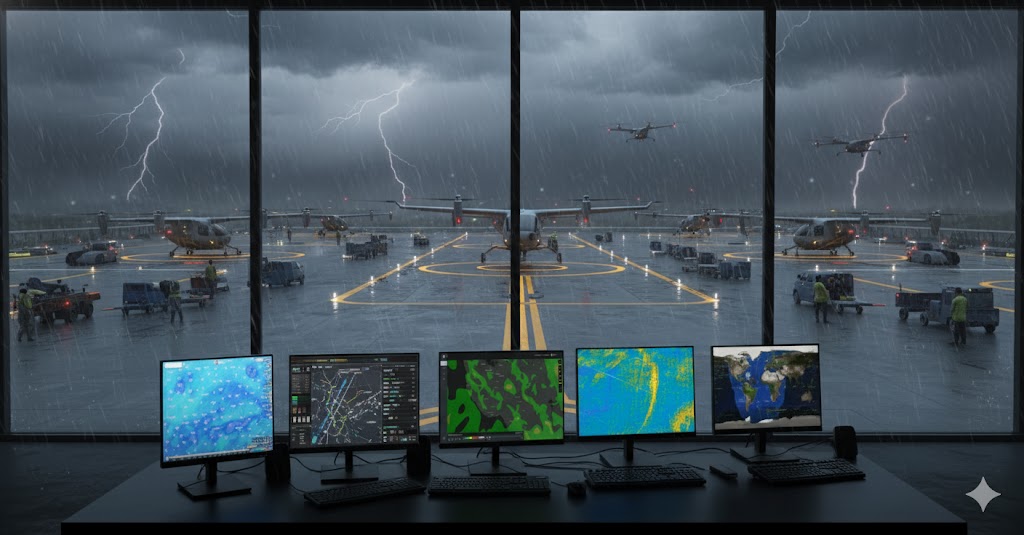Electra.aero has secured 2,200 pre-orders for its innovative EL9 Ultra Short hybrid-electric aircraft, valued at nearly $9 billion. This development positions Electra with one of the largest order pipelines in the emerging AAM sector, demonstrating substantial market confidence in their creative approach to regional air transportation. The company's technology combines blown lift aerodynamics with hybrid-electric propulsion to create an aircraft capable of taking off and landing in extremely short distances. This could significantly transform how people and cargo are transported between locations currently underserved by traditional aviation.
Electra.aero was founded in 2020 by Dr. John Langford, a serial aerospace entrepreneur and former CEO of Aurora Flight Sciences. The company was established with a clear mission: to provide affordable air travel without traditional airports, emissions, or excessive noise. More recently, Marc Allen has taken the helm as CEO, continuing to drive the company's innovative vision.
The concept for Ultra Short aircraft emerged from the collaboration between Langford and researchers at MIT, led by Professors John Hansman and Mark Drela. The team sought to create an electric aircraft design that would be more affordable to build and operate than the predominant eVTOL (electric Vertical Take-Off and Landing) designs. Early analysis and sub-scale flight tests demonstrated the tremendous potential of Ultra Short aircraft to minimize ground space requirements while offering significant range and payload capacity.
The company's development progressed rapidly through several key milestones. In 2021, Electra tested its fully integrated, hybrid-electric propulsion system at its R&D facility in Switzerland. By January 2023, the company secured a Strategic Funding Partnership with the US Air Force valued at up to $85 million to develop and flight test its eSTOL technology. A significant breakthrough came in November 2023 when Electra achieved the first flight of its piloted technology demonstrator aircraft, the Goldfinch EL-2.
This two-seat demonstrator was "the world's first blown lift aircraft using distributed electric propulsion and a hybrid-electric propulsion system." It completed its first all-electric test flight on November 11, 2023, followed by a hybrid-electric flight on November 19, which lasted 23 minutes and covered approximately 30 miles.
The EL9 Ultra Short Aircraft: Technical Innovation
Electra's flagship product, the EL9 Ultra Short, represents a new aircraft category designed to transform regional air mobility. The nine-passenger aircraft integrates blown lift aerodynamics with hybrid-electric propulsion, enabling it to take off and land in spaces as small as 150 feet. This capability allows the aircraft to access locations previously limited to helicopters, including rooftops, parking lots, compact spaces, and unimproved surfaces such as grass fields and repurposed heliports. This flexibility enables novel route networks connecting secondary cities and remote communities, with operators able to dynamically shift between passenger transport and cargo logistics based on real-time demand.
The EL9 offers impressive performance specifications that set it apart from traditional regional aircraft:
- Payload capacity of up to 3,000 pounds or nine passengers with baggage
- Range of up to 1,100 nautical miles at maximum ferry range
- Cruising speed of 175 knots (approximately 200 mph)
- Ability to operate from areas as small as 150 x 100 feet
A key innovation of the EL9 is its hybrid-electric propulsion system, which combines electric motors with a turbogenerator. This system enables in-flight battery recharging, eliminating the need for ground charging infrastructure. The aircraft employs four independent battery packs and a small turbine-powered generator that drives eight electric motors distributed along the wing. This configuration provides multiple operational modes, including hybrid-electric mode, "battery re-charge" mode, and all-electric mode.

The adoption of hybrid-electric aircraft like the EL9 offers multiple benefits. On the environmental front, these innovative aircraft significantly reduce greenhouse gas emissions compared to conventional counterparts while producing remarkably lower noise pollution—a critical factor for community acceptance and urban operations. Studies indicate potential fuel consumption improvements of 5-40% depending on aircraft size, representing substantial progress toward aviation sustainability goals.
Economically, operators benefit from dramatically reduced operating costs, approximately 70% lower than comparable helicopters, alongside 10-15% reductions in maintenance expenses due to simplified propulsion systems and fewer mechanical components. These savings ultimately translate to more affordable regional air travel options, expanding market accessibility.
Operational Flexibility represents the most transformative aspect of the EL9's capabilities. By combining helicopter-like access with fixed-wing economics, these aircraft can serve thousands of locations previously unreachable by conventional fixed-wing aircraft, dramatically expanding the practical air transportation network and the ability to operate from non-traditional sites with minimal infrastructure requirements.
The EL9 will be equipped with a two-pilot cockpit but will feature Safe Single Pilot technology with fly-by-wire controls to enable precision landings by a single pilot. It will be certified for IFR (Instrument Flight Rules) and flight into known icing conditions, enhancing its operational versatility in various weather conditions.
The hybrid system’s in-flight recharging capability further enhances operational resilience, removing the need for ground-based charging infrastructure and enabling seamless long-range missions.
Blown Lift Technology: The Core Innovation
The foundation of Electra's revolutionary approach lies in its proprietary blown lift technology, which represents a significant advancement in aerodynamic design. This technology uses electric motors to blow air over the wing and large flaps, multiplying the lift generated at very low speeds.

Blown lift is not entirely new, NASA pioneered it in the 1960s—but Electra has refined and improved the concept by integrating it with modern hybrid-electric propulsion systems. The principle involves using propellers positioned along the wing's leading edge to accelerate airflow over the wing and flaps, which are then deflected downward. Engineers describe this as "a thick jet sheet coming off the trailing edge of the wing, making the wing act virtually larger than it physically is."
According to Electra's website, "By blowing air over the wing and large flaps with an array of electric motors, our eSTOL multiplies the amount of lift the wing makes at very slow speeds. With this technique, we can take off and land at speeds as slow as 35 mph, which only takes a few vehicle lengths to achieve". During the climb and cruise phases, the system reduces blowing and stows the flaps for more efficient operations.
The company has validated this technology through extensive testing with its EL-2 demonstrator. During flight tests between April and May 2024, the aircraft demonstrated the ability to take off in less than 170 feet and land in under 114 feet, flying as slowly as 25 knots during takeoff and landing. These tests confirmed the practical application of blown lift technology for extremely short takeoff and landing operations.
Market Position and Competition in Advanced Air Mobility
Electra has positioned its Ultra Short technology to fill a unique niche in the aviation market, unlike traditional aircraft that require substantial runway infrastructure or eVTOL aircraft that sacrifice range and efficiency for vertical takeoff capability, Electra's eSTOL approach offers a middle ground that combines the benefits of both paradigms.
According to John Langford, "There's no company that we know that is yet doing exactly what we're doing, which I would define as the hybrid-electric blown-lift for this particular market.” This distinctive approach has resonated strongly with potential customers, as evidenced by the substantial pre-order book.
Nevertheless, Electra operates in the competitive Advanced Air Mobility sector, facing various competitors developing alternative solutions:
- Direct eSTOL competitors: Advanced Aircraft Company, which focuses on long-endurance vertical take-off and landing unmanned aircraft systems. Heart Aerospace - developing the ES-30, a hybrid-electric regional aircraft with a fully electric range of 125 miles and an extended hybrid range of 250 miles
- eVTOL developers: TCab Tech, HopFlyt, and Vaeridion, which are developing fully vertical takeoff and landing aircraft
- Regional electric aircraft developers: Wright Electric is developing a 186-seat commercial jet with an 800-mile range (proposed 2030 launch) and a 100-seat electric plane (proposed 2026 launch)
Electra claims several advantages over these competitors. Compared to eVTOL alternatives, the company states its technology delivers 2.5 times the payload and 10 times longer range with 70% lower operating costs. Relative to conventional aircraft, Electra's Ultra Short needs only about one-tenth of the space for takeoff and landing, enabling access to locations that traditionally only helicopters could reach.
The aircraft's reduced noise profile further strengthens the company's value proposition, claimed to be 100 times less noisy than helicopters, and its ability to operate without significant new infrastructure investments. These factors make the EL9 particularly attractive to operators seeking to expand service to areas with space and noise constraints.
Customer Base and Market Response
The market response to Electra's EL9 has been robust, with pre-orders from a diverse range of global operators. The 2,200 pre-orders represent commitments from 52 operators worldwide, valued at nearly $9 billion.
These customers include:
- Bristow Group, the world's leading global provider of vertical flight solutions and Electra's operational launch partner
- Leading on-demand private aviation platforms, including Indian operators JetSetGo and Blade India, Brazil-based Flapper in Latin America, Germany-based flyv in Europe, Finland-based LYGG in Scandinavia, and U.S. regional airlines JSX and Surf Air
- Recent additions such as Akansel (Turkey), Dieng & Co Engineering (Senegal), Caverton Helicopters (Nigeria), Copenhagen Helicopter and Copenhagen Air Taxi (Denmark), 5 Star Helicopter Tours (US), Global Vectra Helicorp (India), and Helicidade Heilporto (Brazil)
These operators primarily incorporate the EL9 into their fleets to lower operational costs and expand service to new destinations. The aircraft's versatility suits passenger transport, cargo delivery, and specialized operations across various geographic regions and market segments.
Potential Impact on Regional Air Mobility
Electra's technology could fundamentally transform regional transportation by enabling what the company calls "runway independence.” By allowing aircraft to operate from tiny spaces, the EL9 could open direct air service to locations that currently lack aviation infrastructure or are restricted by space constraints.
For example, Langford suggests that the aircraft could enable direct flights from regional airports like Manassas to downtown Manhattan, reducing travel time by half compared to conventional methods. The EL9's operational "sweet spot" is for trips between 25 and 250 miles, with a maximum range of 500 miles, making it ideal for regional connectivity that avoids congested hub airports.
This approach aligns with broader industry trends toward what Electra calls "Direct Aviation" and the "democratization" of air travel—making aviation more accessible, convenient, and sustainable for a broader range of communities.
Future Outlook and Certification Timeline
Electra has established an ambitious roadmap for bringing the EL9 Ultra Short to market. Under its strategic funding partnership with the U.S. Air Force AFWERX Agility Prime Program, the company will develop a prototype of a full-scale pre-production aircraft.
According to the latest information, the first test flights of the production EL9 are planned for 2027, with certification and entry into commercial service anticipated in 2029 under FAA Part 23 regulations. This timeline represents a slight adjustment from earlier projections that targeted commercial service entry by 2028.
The broader Advanced Air Mobility industry is expected to reach significant milestones in the coming years, including the commercial launch of various services, the development of vertiport networks, the integration of traffic management systems, and expansion beyond urban centers. However, challenges remain, including regulatory complexity, infrastructure readiness, public perception concerns, and questions about financial sustainability.
For Electra specifically, scaling production to meet demand presents a significant challenge. As John Langford noted, "With over 2,000 orders really without even trying—the product hasn't even officially been unveiled yet—our big challenge is figuring out how to produce it at a rate.”
Conclusion
As Marc Allen, CEO of Electra, stated, "Electra's Ultra Short is the unlock for a new era of air travel – what we call Direct Aviation – that is as transformative as it's practical.” By creating an aircraft that combines the access advantages of a helicopter with significantly lower noise, reduced cost, improved safety, and decreased emissions, Electra is positioning itself at the forefront of sustainable aviation innovation.
If successful, Electra's Ultra Short technology could represent one of the most significant advances in regional aviation in decades, creating new possibilities for connecting people and places without conventional aviation's environmental impact and infrastructure requirements.




